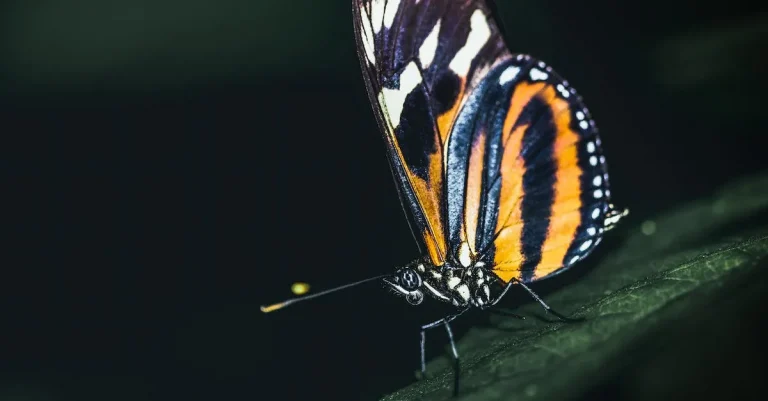If you’re interested in getting a septum piercing, you may be wondering about the meaning behind this distinctive facial piercing. Unlike ear piercings, septum piercings have a long history and cultural significance that goes beyond fashion and self-expression.
Septum piercings have traditionally held spiritual and symbolic meaning in many cultures around the world. Here’s a quick overview of some of the history and meaning associated with septum piercings:
– Sign of strength and rite of passage in Native American tribes
– Symbol of nobility and status in India
– Associated with shamanic traditions in tribes across North and South America
In this comprehensive guide, we’ll explore the origins, cultural significance, and spiritual meanings associated with septum piercings.
Origins and Early Cultural Significance of Septum Piercings
Septum piercings have a rich history that dates back centuries and holds significant spiritual meaning in various cultures around the world. Let’s explore the origins and early cultural significance of septum piercings.
Traditional Practice Among Native American Tribes
Among Native American tribes, septum piercings were a common practice that held deep spiritual significance. The piercing of the septum, the cartilage dividing the nostrils, was believed to open a gateway to the spiritual realm and enhance one’s connection with the divine. It was often seen as a rite of passage and a symbol of courage and strength.
Many tribes, such as the Lakota Sioux and the Hupa, adorned their septum piercings with sacred objects like feathers, beads, or bones, further enhancing their spiritual significance. These piercings were not only a form of self-expression but also a way to honor their ancestors and connect with their tribal heritage.
Status Symbol in India’s Caste System
In India, septum piercings have a long-standing history and hold a unique cultural significance. In the traditional caste system, septum piercings were a symbol of wealth and social status. They were primarily worn by women from higher castes as an indication of their privileged position in society.
These piercings were often adorned with intricate and ornate jewelry, showcasing the wearer’s affluence and aesthetic taste. The larger the nose ring, the more affluent the family was perceived to be. Today, septum piercings continue to be a popular fashion trend among Indian women, representing a fusion of tradition and modernity.
Shamanic and Mystical Meanings in South America
In South America, septum piercings have deep shamanic and mystical meanings. Among indigenous tribes like the Shipibo and the Ashaninka, septum piercings are believed to enhance spiritual vision and facilitate communication with the spirit world.
Shamans, who act as intermediaries between the physical and spiritual realms, often wear septum piercings as a symbol of their spiritual power and connection with the divine. The piercing itself is seen as a way to open the third eye and access higher levels of consciousness.
These tribes also adorn their septum piercings with sacred symbols and feathers, representing their connection to nature and the spiritual forces that govern their lives. The piercings serve as a reminder of their ancestral wisdom and the importance of maintaining harmony with the natural world.
Septum Piercings in Modern Culture and Society
Decline in Cultural Significance
In ancient cultures, septum piercings held deep spiritual and cultural significance. They were used as a form of ritualistic adornment and symbolized various aspects of life, such as fertility, spirituality, and social status. However, over the years, the cultural significance of septum piercings has declined in many societies.
With the rise of Western influence and the advent of more conservative ideologies, traditional practices like septum piercings have been gradually abandoned or viewed as outdated. The decline in cultural significance has led to a shift in perception, with septum piercings being seen as more of a fashion statement rather than a deep-rooted cultural tradition.
Resurgence in Popularity
Despite the decline in cultural significance, septum piercings have experienced a resurgence in popularity in recent years. This can be attributed to various factors, including the influence of celebrities and social media. Many celebrities, such as Rihanna and Zoe Kravitz, have been seen sporting septum piercings, which has helped to normalize and popularize the trend.
Furthermore, social media platforms like Instagram and Pinterest have played a significant role in showcasing unique and creative septum piercing designs. This exposure has sparked interest and curiosity among individuals, leading to an increased desire to explore septum piercings as a form of self-expression.
It’s important to note that the resurgence in popularity is not limited to any specific gender or age group. People from all walks of life are embracing septum piercings as a means of expressing their individuality and personal style.
Self-Expression and Nonconformity
One of the main reasons why septum piercings have gained traction in modern culture is their association with self-expression and nonconformity. Unlike more common piercings, such as earlobe piercings, septum piercings are still somewhat unconventional and can be seen as a bold statement.
Septum piercings allow individuals to break away from societal norms and express themselves in a unique and personal way. They can be a form of rebellion against the status quo, challenging traditional beauty standards and embracing individuality.
By adorning their septums, people are able to showcase their personality, creativity, and inner spirit. It’s a way of saying, “This is who I am, and I’m proud to be different.”
While septum piercings may have lost some of their traditional cultural significance, they have found a new place in modern culture as a symbol of self-expression and nonconformity. Whether you choose to get a septum piercing to honor ancient traditions or simply because you love the way it looks, it’s clear that this particular form of body modification has left an indelible mark on our society.
The Meaning and Significance of Septum Piercings Today
Septum piercings have gained popularity in recent years, becoming a popular form of self-expression and adornment. Beyond the aesthetic appeal, septum piercings also hold deep personal and spiritual meaning for many individuals. Let’s explore some of the reasons why septum piercings have become so significant in today’s society.
Personal and Spiritual Growth
For some, getting a septum piercing represents a journey of personal and spiritual growth. The act of piercing the septum can be seen as a rite of passage, symbolizing the individual’s transition into a new phase of life. It can serve as a reminder of their ability to overcome challenges and embrace change. The pain endured during the piercing process can also be seen as a form of catharsis, allowing individuals to release emotional baggage and embark on a path of self-discovery.
Moreover, septum piercings can act as a constant reminder to stay grounded and present in the moment. The position of the piercing, located in the center of the face, serves as a focal point for meditation and mindfulness. It encourages individuals to connect with their inner selves and find balance in their lives.
Connection to Ancestral Traditions
Septum piercings have a rich history that dates back centuries and is deeply rooted in various cultural and ancestral traditions. In many indigenous communities, septum piercings were and still are seen as a symbol of strength, courage, and wisdom. They were often worn by tribal leaders, warriors, or individuals with a high spiritual status.
By getting a septum piercing, individuals today can honor and connect with these ancestral traditions. It serves as a way to pay homage to their roots and embrace a sense of cultural identity. It can also be a way to reclaim and celebrate cultural practices that have been marginalized or forgotten over time.
Taking Control of One’s Identity
Septum piercings offer individuals the opportunity to take control of their own identity and express themselves authentically. In a world that often imposes societal norms and expectations, getting a septum piercing can be a rebellious act of self-empowerment. It allows individuals to break free from conventional beauty standards and redefine their own sense of beauty.
Furthermore, septum piercings can serve as a form of body modification that challenges societal perceptions. By adorning their septum, individuals assert their right to make choices about their own bodies, regardless of societal judgment or stigma. It becomes a symbol of autonomy and self-ownership.
Conclusion
While septum piercings today are often seen as just another body modification or fashion statement, the history and deeper meaning behind this piercing gives important cultural context.
For many people around the world, both in ancient and modern times, the septum piercing has held personal symbolic significance and spiritual meaning beyond its aesthetic appeal.
Ultimately, the meaning behind any septum piercing comes down to the motivation and intention of the wearer. But having a greater understanding of the rich cultural legacy can inform how we view and appreciate this iconic piercing.






